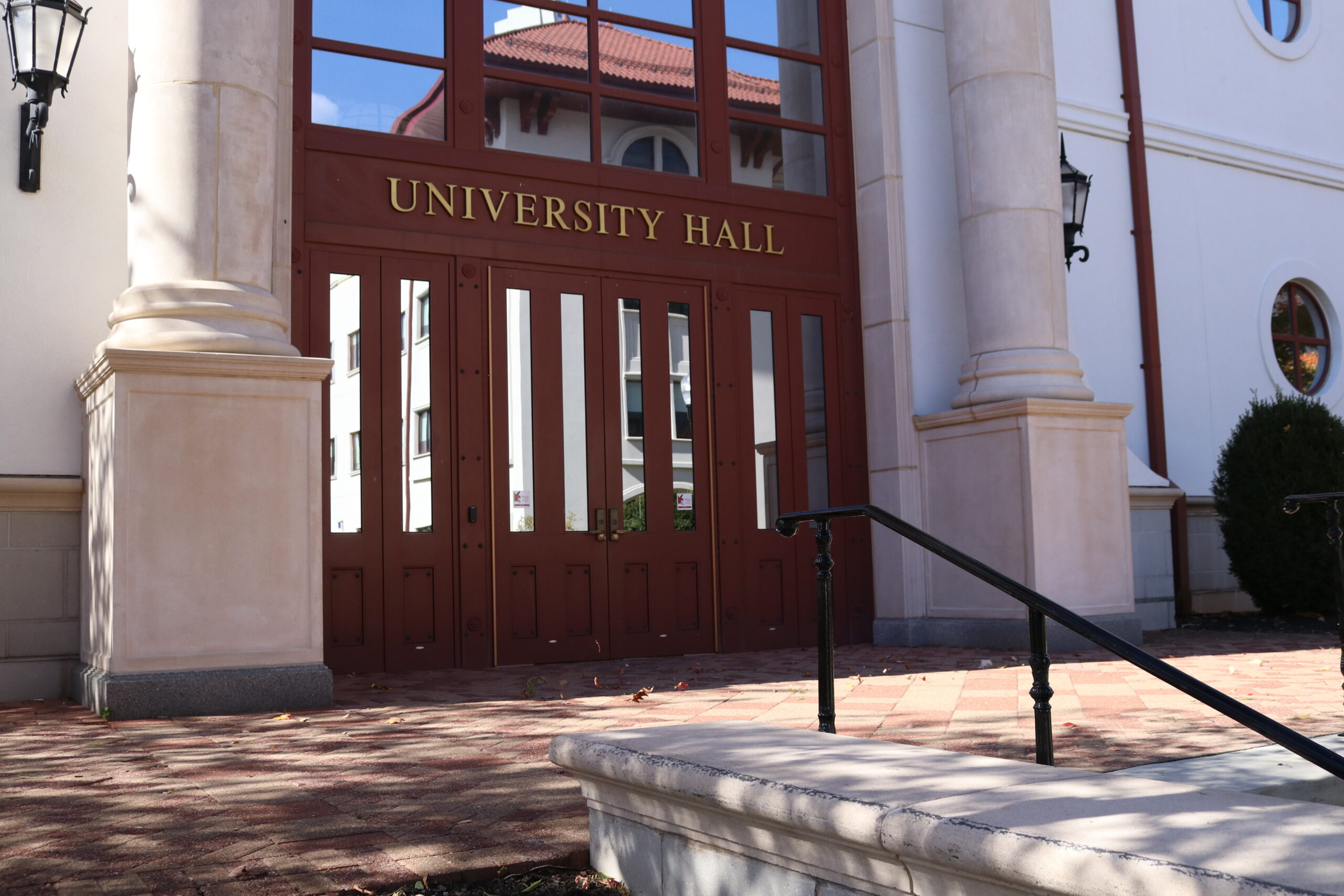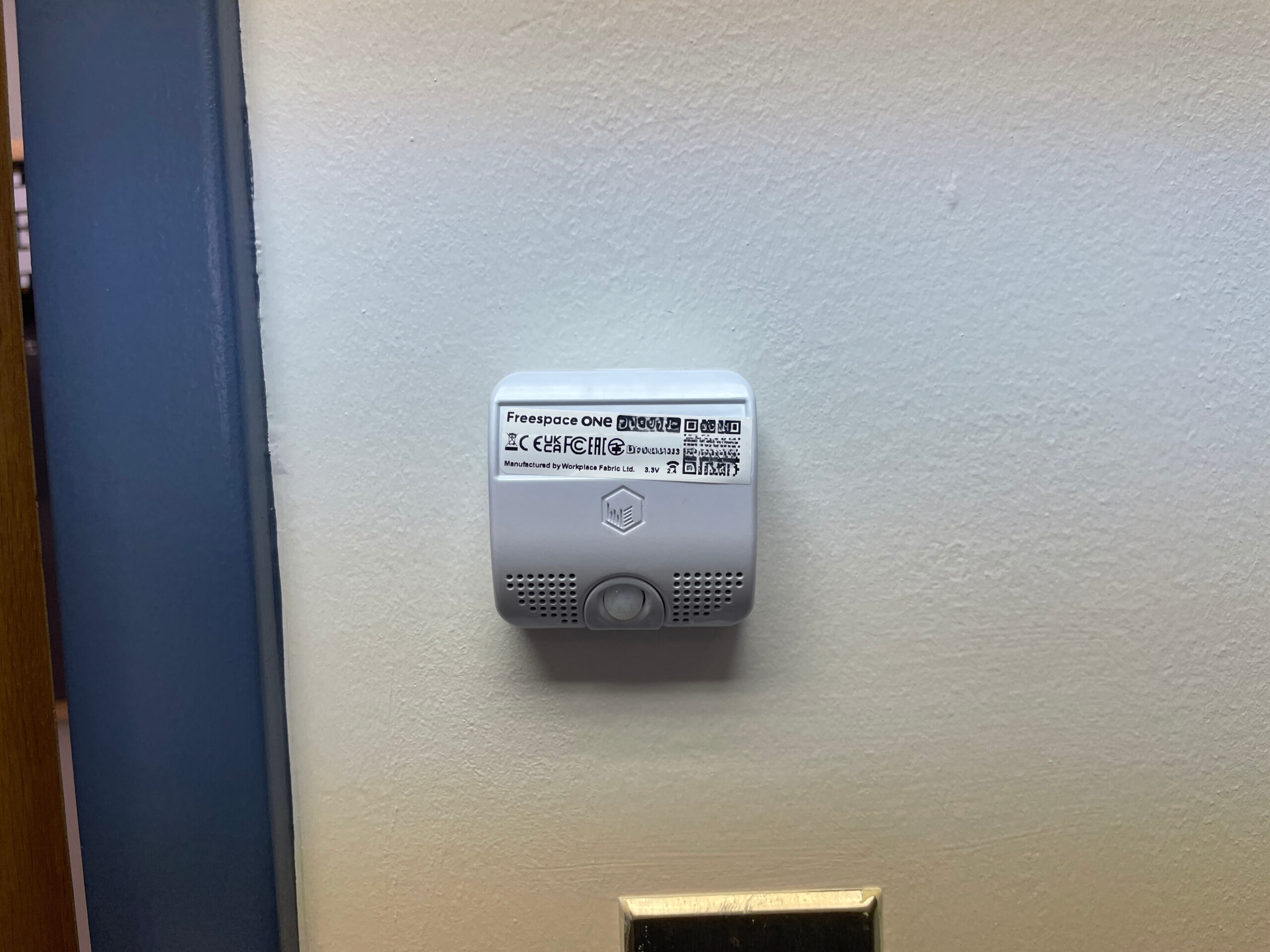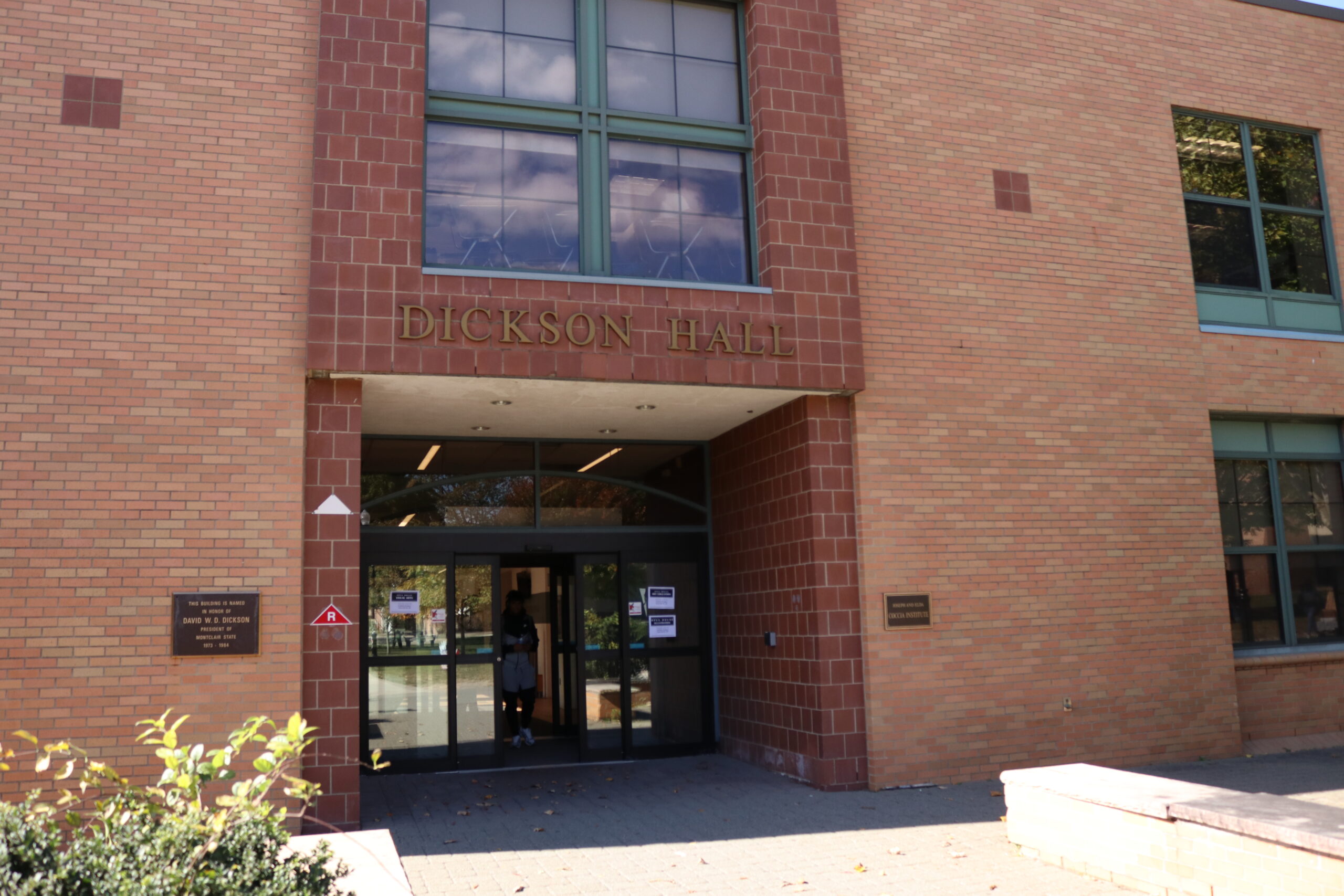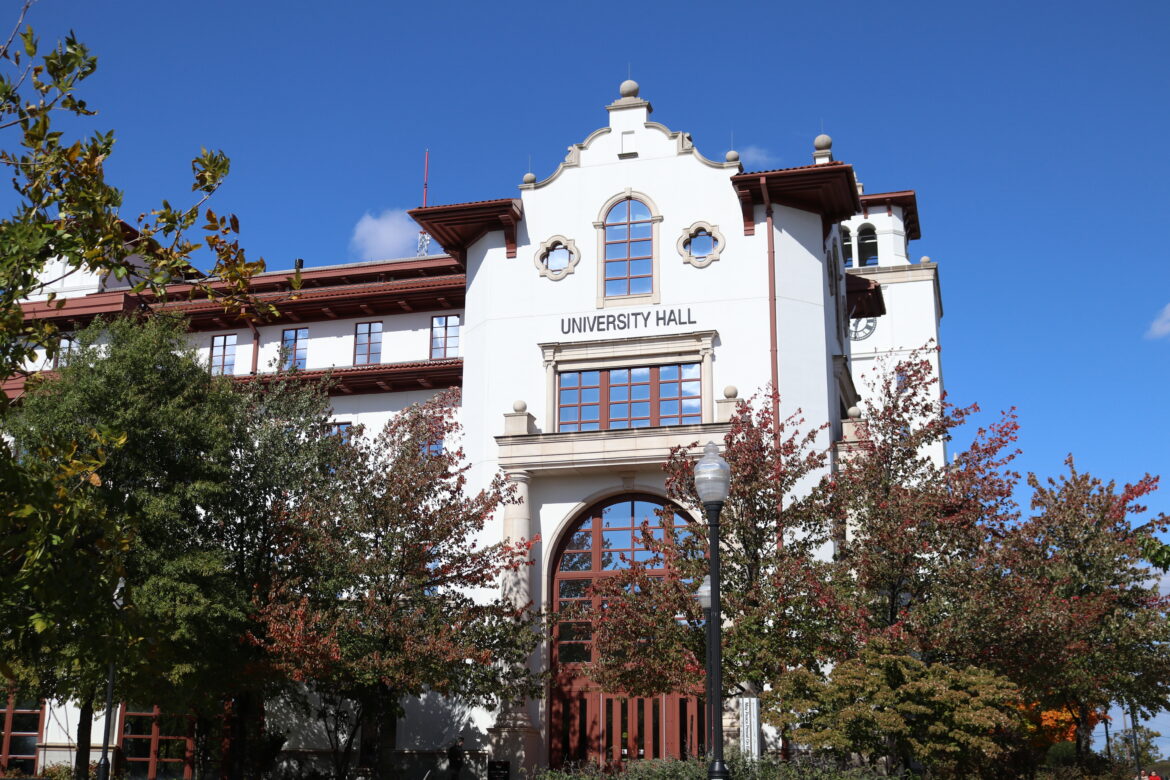As part of Montclair State University’s ongoing efforts to optimize campus spaces, University Facilities is performing a Space Utilization Study, collecting data from various areas on campus based on usage patterns.
“Patterns of occupancy for classrooms, conference rooms, lounges, labs, offices and workstations will be analyzed at the building level to determine trends related to space use,” an article on the university’s website said. “Findings, combined with input from faculty and staff via a workplace survey, will be used to explore how we can most effectively support our growing needs.”
Sensors have been placed in Dickson Hall and University Hall, according to the chief operating officer and senior vice president of finance and administration, Benjamin Durant. The collection of data will conclude on March 7, 2025, and sensors are expected to be removed during spring break.

University Hall is one of the buildings where the Space Utilization Study is taking place. Meagan Kane | The Montclarion
“A comprehensive report summarizing the findings will be prepared and delivered to the president later in the spring,” Durant said. “The exact delivery date will depend on the time required to aggregate and validate the data.”
The study comes as a partnership between Montclair State, Freespace and Gensler and is made up of two phases. It was introduced with the installation of heat sensors in office spaces, conference rooms and cubicles.
Freespace is a company that works to create workspace solutions by optimizing and studying ways areas can better use space. Gensler is an engineering and architecture firm that collects data from heat sensors. The raw data is collected by Gensler and then sent to Freespace to be further analyzed.
Phase one was completed in fall 2024 and collected data during a four-week study period.
In October, Dr. Laura Nicosia, an English professor, was taken aback when she came into her office one morning and found a sensor on the wall. She did not appreciate the deployment of the sensors, given her tenure.

A heat sensor that has been installed in Dickson Hall. Meagan Kane | The Montclarion
“This place is my home,” Nicosia said. “I did my master’s here, I met my husband here. We raised our family while [we were] both faculty working here and that means a lot to me. I recognized the need to do a study. It’s just how it was deployed, that was the issue.”
Though Nicosia does not have an issue with space usage being assessed, she assumed that the administration would first ask faculty and staff for answers before installing the sensors.
“If you need to find out how frequently we’re here or how long we’re here, send me an email and give me a link to a survey,” Nicosia said. “I’ll tell you I’m here three days a week–four, five, six hours at a time in my office.”

Dickson Hall is one of the buildings where the Space Utilization Study is taking place. Meagan Kane | The Montclarion
Dr. Arthur Simon, also an English professor, commented on his experience in October. He revealed his initial reaction to how the University suddenly decided to drop the news of the space assessment study to faculty–four days before installing the sensors.
“Facilities sent out the email but shouldn’t that have come in a face-to-face meeting perhaps with the head of the union?” Simon asked. “Shouldn’t that come in a more personal way? But to deliver that email on a Friday doesn’t seem the way to implement a step like this.”
Similar to Nicosia, he suggests better ways Montclair State could communicate with faculty rather than at the last minute.
“How about just better communication, a more open collegial communication rather than just taking us by surprise on a Friday late day email,” Simon continued.
This semester, learning, research and study spaces are being assessed, following a similar format where sensors collect raw data based on the detection of movement patterns in a room.
Having been a faculty member for 20 years, Nicosia said this was the first time that she didn’t want to be in her office or on campus.
“I look forward to coming in every day [but on] Monday when I saw that puppy sitting there on the wall, it was the first time in a while that I actually felt like I didn’t want to be in my office.”



